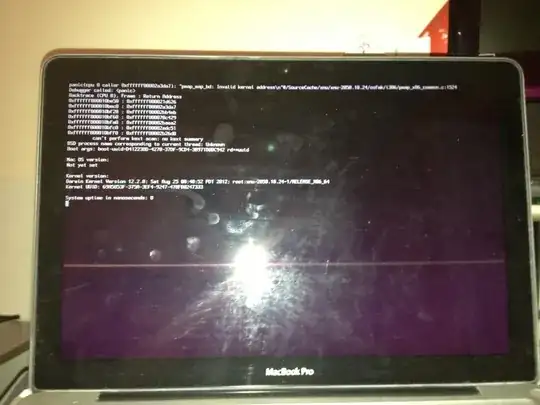Ok so there is an OSX entry. Have you tried selecting the OS X entry instead of the Ubuntu/Linux entry (using the arrow keys)? What happens then? UPDATE: Yes you have, but you get an error, you have updated that in your question
Update 1
Ok so from your updates it looks like you've made some progress; I'm relieved that you didn't wipe out your OS X partition! Also, putting rEFIt on is great as well. Could you specify (a) what MacBook Pro model you have (something like 6,2 or Mid 2010 which can be found by going to the upper left hand corner, clicking the Apple, click About This Mac >> More Info, and there it will say something like "Mid 2010') and (b) what version of Ubuntu?
If you can't solve your graphics problem (I would try googling it), then best bet would be to reinstall Ubuntu. I can help with specific install instructions for Mac, if you want. I've done this quite a few times. One thing - the Graphics problem might be because of what model your Mac is / if you installed it with EFI or BIOS support. Did you use the normal Ubuntu install disk, or the special Macintosh one?
I always use the Non-Mac version. The Normal version. I would advise that you do as well. It appears on the Ubuntu Apple hardware page (help.ubuntu.com/community/MacBookPro7-1/Quantal) that your 7,1 is supported quite well under 12.10. I would wipe out Ubuntu and then reinstall it and see how it goes.
Update 2
You say:
I've run into a couple roadblocks. 1. I went into disk utility and attempted to remove both the main Ubuntu partition and its swap. The swap refuses to be removed. 2. I somehow removed my Recovery Partition, is there any way to get this back? 3. Is there something else I should do to uninstall? rEFIt still has Ubuntu as an option (this may go away once I get rid of the swap)
Alright...
I don't know why Disk Utility won't remove the swap partition. Just to clarify, you open Disk Utility, select your hard drive in the left-hand pane, then click on the "Partition" Tab, then select the Swap partition (whatever you named it) in the little graphic / table describing all your partitions on that drive (NOT in the left hand pane) under the title "Partition Layout" and click the small "-" button below the graphic / table and follow the prompts? Please give the error you receive if this doesn't work.
I, too, have accidentally removed my recovery partition. Bummer. The only (safe) way to recreate the partition (or any way that I trust; you can Google the problem, but some of the ways online with custom scripts from other people seem a little sketchy) is to reinstall Mac OS X. This is actually not as bad as you think; you need to re-download your version of OS X (I assume Lion or Mountain Lion) from the Mac App Store, rerun the install. All your files and configs will be the same. Make sure you wipe out all the partitions after your main Mac one, though, first (including swap).
Then your recovery partition will be back where it started. Then you can reinstall Ubuntu. Also, when installing, at least when I installed Ubuntu 12.04 on my Mac, I did not use a swap partition. Typically 4GB is enough (default on Macs, maybe you have 8?) You can later create a Swap file which acts like swap but is just a file on disk in Ubuntu. I'm adding an Answer with all the info in the comments, which I'll update as your problem progresses. Having no Swap removes some added complexity to everything.
